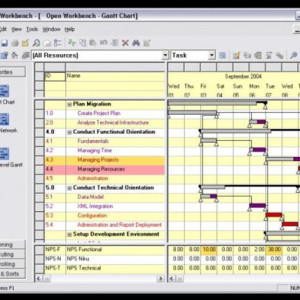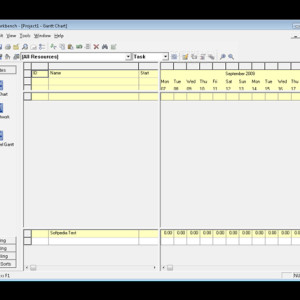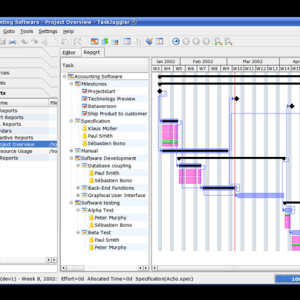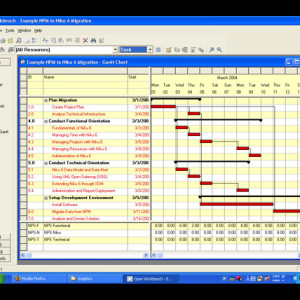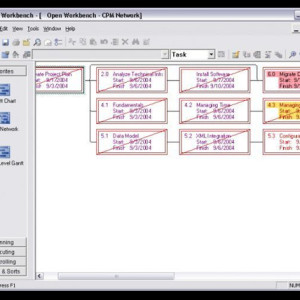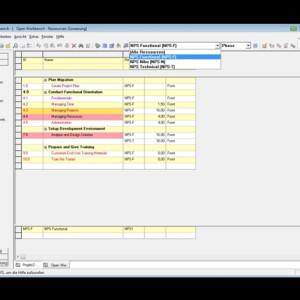Open Workbench is a free project management software focused on scheduling. It is an alternative to Microsoft Project. It is a free Windows-based desktop application that provides robust project scheduling and management functionality. It is free to distribute throughout the enterprise. When users need to move beyond desktop scheduling to a workgroup, division or enterprise-wide solution, they can upgrade to CA Clarity PPM, a project and portfolio management system that offers bidirectional integration with Open Workbench.
Features:
- Comprehensive Project Management Capabilities: it is a robust, mature tool for project scheduling and management. It conforms to and supports the underlying ideals of project management while presenting information in a way that is intuitive and easy to learn.
- Advanced Scheduling Functionality: Once the project plan is created, project managers can schedule tasks with assigned resources for completion. For large projects, scheduling can be an intricate process that balances task relationships, resource availability, and task duration. The powerful Auto Schedule feature in it is designed to handle just this type of complexity. With the click of a button, the Auto Schedule feature uses an internal set of rules to create a schedule that takes into account task constraints, dependencies, priorities and resource constraints—automatically generating the best method for project completion. When the plan is approved, the project manager can create a baseline, which gives a snapshot of the project and allows revisions to be compared with the original plan.
- Flexible Information Views: Project managers have access to a library of project views, allowing them to customize the information display to their needs. Multiple views are supported, including Gantt and Phase Level Gantt charts, as well as logical, PERT-style displays. Organizations can also define and distribute custom views as corporate standards.
- Scope Change Management: Modifications are required when a project’s scope changes, whether due to new requirements, lack of resources or time and budget constraints. It identifies these potential problems and trends before they affect a project by performing the following analyses:
- Critical Path: analyzes isolated dependency networks and tasks with negative float.
- Estimated Time to Complete: calculates the estimated usage required to complete a task and ascertains if deadlines will be met.
- Earned Value: analyzes the true progress of a project, taking into account the effort expended as well as what has been achieved.
- Beyond Desktop Scheduling: Desktop scheduling applications work well for individual users and small workgroups where it’s possible to manually assess how people and plans affect the work to be done. In larger and more complex organizations, project managers need insight into the organization’s resource availability, project expenditures, standardized methodologies and shared knowledge.
It claims to be open source. However, the source code available through SourceForge does not include “scheduling algorithms” which are currently not open sourced and will be maintained by CA Technologies (Computer Associates). It also there is no support available from CA for the version of downloadable from this site. Full support from CA is available for versions of Open Workbench included with CA Clarity PPM.
[box type=”info”]Wiki info:
Official Website: http://www.ca.com/us/collateral/demos/na/ca-open-workbench.aspx [/box]

